Celebrate the Heroism of MENA Jewish Women on Chag Habanot
When it comes to Hanukkah, you probably think of the story of Hanukkah that revolves around male heroes (the Maccabees). Middle Eastern and North African (MENA) Jews, however, also observe Chag Habanot, which celebrates the lesser-known contributions of women.
Among the many legends surrounding the Hanukkah rebellion is a story known in Hebrew as Ma’ase ha-Isha ha-Yehudit (which translates as “the acts of the Jewish woman”), a colorful midrashic tale based on the Book of Judith.This version preserved by Sephardi Jews tells of a Jewish woman who beheaded the Selucid king, Aleforne (also known as Holofernes), to free Israel from foreign occupation. According to some traditions, the king's soldiers found his decapitated body and responded, “A single Israelite woman has brought about this horror!” Judith demonstrated bravery and resilience; she was a woman who daringly tricked and killed the Syrian-Greek king through her cunning and desire to protect her people.
Other stories about the origins of Hanukkah reveal the tragedies faced by Jewish women at the hands of Israel’s enemies. The Megillat Antiochus, also known as Kataba Bene Hashmona’i, tells of the atrocities committed by Greek Syrian soldiers, including the rape of the granddaughter of the Kohen Gadol (High Priest) on top of a Torah scroll and multiple instances of the martyrdom of mothers who refused to follow anti-Jewish laws prohibiting circumcision and Shabbat observance. Likewise, we learn of Hannah, who, according to II Maccabees (chapter 7) suffered martyrdom along with her seven sons, who were murdered rather than submitting to Hellenistic culture and religious values. These tales of female heroism and suffering fill the pages of Jewish history, especially during the Maccabean revolt.
In MENA Jewish communities—particularly families like my own, who immigrated from Tunisia—celebrate these women’s honor and courage in a festival called Chag Habanot (Eid Al B’nat in Judeo-Arabic), which translates as “Festival of the Daughters,” or Rosh Hodesh LaBanot in Hebrew. The specifics of the day vary from community to community, but the general customs are clear. Chag Habanot is usually celebrated on the seventh day
of Hanukkah, the first day of the Hebrew month of Tevet (this year beginning the evening of December 24). It is customary for women to sing, dance, and light the night’s menorah candles in honor of women, a tradition that my family cherishes as well. The festival focuses on bringing generations of Jewish women—grandmothers, mothers, daughters, aunts, and sisters—together to celebrate. In some communities, mothers give their daughters gifts and bridegrooms give gifts to their brides; women or girls who have drifted apart reconcile their differences and reignite their friendship. All these traditions were celebrated in the North African communities, particularly in Tunisia and on the island of Djerba, where my grandparents and great-grandparents grew up and where their ancestors lived for millennia.
Women’s bravery and sacrifice did not stop during the Hasmonean era of the 2nd century B.C.E., but rather continued through the lives of my foremothers in the Middle East and North Africa. These stories have inspired generations of Jewish women and resonate personally with me as a woman, an Israeli, a recent immigrant to the United States, and a descendant of Jews from North Africa.
My grandmothers are from the island of Djerba, Tunisia, and Tripoli, Libya. In 1942, the Jewish Quarter of Benghazi was occupied by the Nazis and more than 2,000 Jews were deported and sent to Nazi labor camps. Even with the end of World War II, the situation for the Jews in Libya did not improve. In 1945, approximately 130 Jews were killed and even more injured in a pogrom in Tripoli. The rioters not only destroyed and looted the city’s synagogues, but they also ruined hundreds of homes and businesses. In 1948, coinciding with the declaration of the State of Israel, antisemitism escalated, and rioters killed twelve Jews and destroyed 280 homes. My family owned a grocery store in “Hara” (the Jewish Quarter in Tripoli) that was among the Jewish businesses and properties that were often attacked and looted.
In 1950, my maternal grandmother, Safta Rina Taib, fled from Tripoli, Libya, to Israel with my saba (grandfather), two kids, and two suitcases. Initially, they lived in the ma’abarot (refugee absorption camps established in Israel in the 1950s); life in the ma’abarot wasn’t easy, and my grandma even gave birth to her third child in one of these refugee camps. The family stayed there for eight years before moving to an apartment in Bnei Brak. In 1964, my paternal Safta Alusha Hadad left Tunisia for Israel on a small boat with my saba (grandfather) and their six children to pursue the Zionist dream and return to Erez Israel.
Against all odds, these women were able to take matters into their own hands and return to the land for which their ancestors prayed daily—the land that Judith and countless other Jewish matriarchs fought to defend.. Chag Habanot honors Judith, as well as subsequent generations of strong Jewish women, and the vital role women play in Jewish life and in protecting our ancestral homeland. American Jewish feminists today (Ashkenazi as well as Sephardi and Mizrahi) are beginning to look to the MENA festival of Chag Habanot for feminist inspiration.These stories of brave Jewish women continue to resonate deeply with me; Mizrahi and Sephardic women today are the feminist warriors our Jewish ancestors and our grandmothers dreamed of.
In honor and memory of my saftas, Alusha bat Bibouta and Rina bat Buba (z”l).

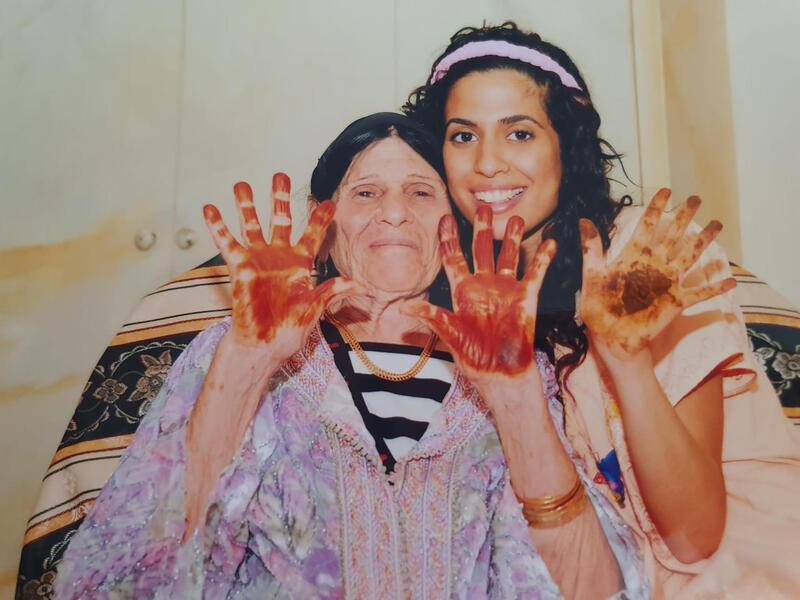
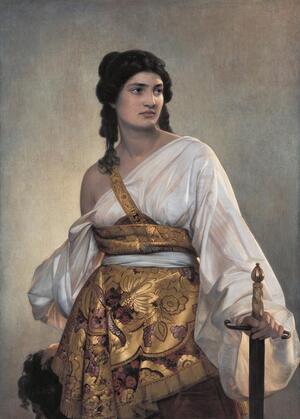
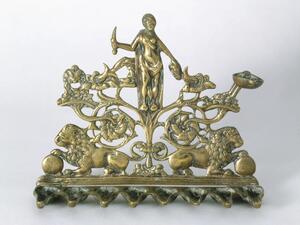
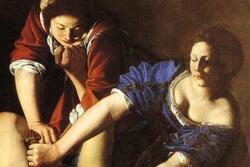

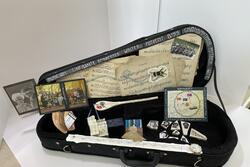


This is very interesting because it was traditional for women in many Jewish communities to celebrate Rosh Chodesh in general and not do mundane work on Rosh Chodesh because did not participate in the Sin of the Golden Calf and were therefore given Rosh Chodesh as a gift. Here, they're celebrating Rosh Chodesh (Tevet) and Chanukah at the same times recognizing the women who played significant roles in the miracle of Chanuakah such as Hannah who allowed her 7 sons to be killed in order not to bow down to idols, Yehudit who killed Holofernes and the daughter of Matisyahu who ripped her clothing in front of the Jewish men in order to arouse them to stop the odious custom of the Greeks who would violate every women on her wedding day before she could be with her husband. So celebrating Rosh Chodesh Tevet and Chanukah together makes so much sense historically. I just want to know when this minhag/custom actually started.
Jewish Feminism has been an integral part of Jewish history. We Jews have always been ahead of our times, while the rest of the world ignored and neglected humankind's greatest resource. My aunt was also from Tripoli, Libya. Her family lived there for over 300 years. They were just as indigenous as any Libyan Arabs, yet they were forced out and lost all their property. They also moved to Israel, and struggled to rebuild their lives, as did all of my family. This story has yet to be taught in the American Jewish educational system, such as it is. Everyone is taught about the Palestinian "nakba" narrative, but how many American Jews know that over half of Israelis are immigrants from Arab countries, and are therefore indigenous to the Middle East? Sadly, very few, and they are not talking. Why is there no parallel Mizrahi and Sephardic Jewish "nakba" narrative? The Palestinians have a dedicated UN agency to support the ancestors of those Palestinians that were displaced in 1948. UNWRA has a yearly budget of $1 billion. Where is the agency for the Jewish refugees displaced from their homes in Arab countries? Mizrahi and Sephardic Jews are not recognized by the UN. I have tried to educate the American congregation at my synogogue, twenty-five years ago, and most of the attendees at my lectures were supportive and interested. But I was prevented from continuing my lecture series by a handful of congregation members. The education director who helped organize the lectures was fired, as was the congregation's rabbi. The new education director would not return my calls. I taught about The David Project's documentary "Forgotten Refugees." I introduced American Jews to a whole new Jewish world that they had never heard about previously. Sadly, The David Project organization fell apart. Their documentary has disappeared, and no one has even heard of it's existence. The stories of Mizrahi and Sephardic Jews are not only being neglected, they are being actively suppressed. Why does this continue? I would be interested to hear about your experiences.
להצלחה שלך
Roddy Frankel
how interesting. Hooray us
Thank you for this. We're Ashkenazim, but my daughters, wife and I celebrated Hag HaBanot this year when we lit the seven candles tonight.
Great story and inspiring as well! I love the idea of Chag Ha Banot. I think we should make it part of our Chanukah celebration every year!
Thank you.